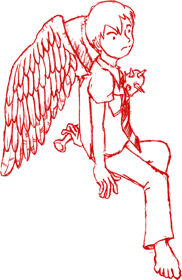 |
Reactive Aggressors
Basic Concept One of the earliest theories for reactively aggressive behaviour was the frustration-anger theory of aggression (Berkowitz, 1963; Dollard, Doob, Miller, Mowrer, & Sears, 1939). The theory states that when someone experiences failure or encounters something outside of his/her expectations, it will provoke anger that leads to further violent actions. Therefore, reactive aggressors generally are driven by outraged emotion.
Reactive aggressors respond to perceived events with cognitive distortion, which leads to acute responses (Pulkkinen, 1996; Salmivalli & Nieminen, 2002). Buss and Perry (1992) referred to as reactive aggressors as ineffectual aggressors. They are easily affected by their anger and anxiety when interacting with their peers, and they often cause arguments with others. Reactively aggressive behaviour can also be explained by the Social Information-processing (SIP) model (Crick & Dodge, 1996). This model suggests that people follow a six-step cognitive process when receiving messages and cues from the outside world and that appropriate action will be taken in return:
Characteristics of Reactive Aggressors Reactive aggressors usually lack confidence, social skills and problem-solving skills. Further, they are very sensitive to their surroundings (Anderson, 1989; Mynard & Joseph, 1997). Besides, reactive aggressors easily take part in other kinds of deviant behaviours, such as smoking and drinking (Nansel et al., 2001). They have poor problem-solving skills and tend to attribute their problems to external factors without taking responsibility for the consequences (Andreou, 2001). Generally, the academic achievements of them are usually lower than average, and they detest the restrictive and disciplinary environment of schools (Nansel et al., 2001).
Most reactive aggressors suffer from the Attention Deficit Hyperactivity Disorder (ADHD). Reactive aggressors have poor emotional regulation skills (Xu & Zhang, 2007). They often disturb and annoy their classmates during lessons (Carney & Merrell, 2001). Their peers are aware that they may become easily agitated and fly into a rage without any conflict, making it difficult for reactive aggressors to establish relationships and friendships with others (Anderson & Bushman, 2001). Because reactive aggressors have poor verbal abilities (Arsenio, Adams, & Gold, 2009) and seem to use violence with no plausible explanation, teachers often remark that they cause trouble for no reason. Consequently, they are often blamed and punished, making it even harder for them to gain trust and receive support from teachers. Family Background The parents of reactive aggressors tend to use harsh punishments, and some may even rely on the abusive disciplinary method (Bowers, Smith, & Binney, 1994; Xu, Farver, & Zhang, 2009). Children, who have experienced physical or verbal abuse from their parent, may become insecure and hypervigilant towards threatening social cues. In some cases, the parents adopt extreme parenting styles, with one parent being completely non-interfering and the other being extremely strict. Most reactive aggressors come from families in which they receive little love and are not properly taken care of. It makes them defensive, and it is easy for them to build barriers against the outside world. Gradually, put them in risk to develop the hostile attributional bias.
Negative Effects Reactive aggressors often think they do not have any worth. They have low self-esteem and poor self-image (O’Moore & Kirkham, 2001). Studies have shown that the overall self-image of reactive aggressors is lower than that of proactive aggressors, and is the lowest among all other non-aggressors (O’Moore & Kirkham, 2001). 21.5% of reactive aggressors are diagnosed with oppositional conduct disorder, and 17.7% are diagnosed with depression. The percentage of reactive aggressors with oppositional conduct disorder and depression is higher than proactive aggressors. When reactive aggressive adolescents enter adulthood, they are more likely to have acute emotional problems (i.e. anxiety) and abuse drugs (Fite, Raine, Stouthamer-Loeber, Loeber, & Pardini, 2009).
Case Study Duncan (a pseudonym) is an eight-year-old boy suffering from his father’s coercive parenting style. He will be beaten by his father when his father does not do well at work or loses money at gambling. What makes the situation worse is that Duncan also receives limited care from his mother. Duncan grew up with little sense of security, love or family warmth. He lives in a state of contradiction and fear, which often makes him defensive and on guard against the world. As a result, he has developed a hostile attributional bias toward the world around him.
In the group intervention, Duncan revealed that he had once hurt himself by accident and had some scars on his arm. A few days after the accident, he saw some classmates chatting and laughing in the corner of the classroom. He claimed he believed they were talking about his scars, and he became agitated and angry. He went up to them and hit them without asking why they were laughing. Also, Duncan shared that he had been told off and beaten up at home several times without any reason. Thus, he had become sensitive, agitated and hostile in response to his parents’ criticism. From what Duncan shared, it is clear that he has low confidence and low self-esteem, and that he lacks both social skills and problem-solving skills. Further, he is sensitive and hostile towards his surroundings even when there is no real threat. Due to his experience with being told off and beaten at home without any reason, he has developed a tendency to be self-defensive to protect himself. He believes he must verbally or physically attack others before they can do the same to him. Duncan’s case reveals the characteristics of a typical reactive aggressor. |
